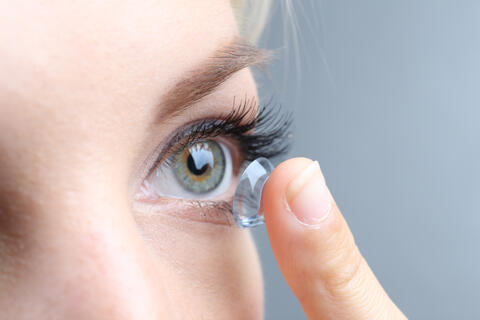Acanthamoeba Keratitis
Acanthamoeba keratitis is a rare but serious eye infection that can lead to permanent eye damage or blindness. It is caused by an organism that is too small to be seen with the naked eye. This organism is a free-living ameba (single-celled living organism) called Acanthamoeba.
Acanthamoeba causes Acanthamoeba keratitis when it infects the clear outer layer of the eye called the cornea.
Acanthamoeba amebas are very common in nature and can be found in bodies of water (for example, lakes and oceans), soil, and air. Infections are most common in people who wear contact lenses or have an injury to their eye.
Acanthamoeba Keratitis 101
The symptoms of Acanthamoeba keratitis can be very similar to the symptoms of other eye infections. These symptoms, which can last for several weeks or months, may include:
- Eye pain
- Eye redness
- Blurred vision
- Sensitivity to light
- Sensation of something in the eye
- Excessive tearing
Patients should contact their eye doctor if they have any of the above symptoms. Acanthamoeba keratitis will eventually cause severe pain and possible vision loss or blindness if untreated.
It is important to see your doctor as soon as possible if you think you may have Acanthamoeba keratitis. There are several prescription eye medications that can be used for treatment. However, Acanthamoeba keratitis can be difficult to treat. Work with your doctor to decide on the best treatment for you.
Acanthamoeba keratitis is most common in people who wear contact lenses, but anyone can get it. For people who wear contact lenses, certain practices can increase the risk of getting Acanthamoeba keratitis, such as:
- Storing and handling lenses improperly.
- Disinfecting lenses improperly (such as using tap water or homemade solutions to clean the lenses).
- Swimming, using a hot tub, or showering while wearing lenses.
- Coming into contact with contaminated water.
- Having a history of trauma to the cornea.
- Acanthamoeba keratitis FAQ's: The Centers for Disease Control and Prevention (CDC) webpage that covers frequently asked questions on Acanthamoeba keratitis.
- Healthy Contact Lens Wear and Care: The CDC webpage that covers best practices related to contact lenses.
- Other types of Acanthamoeba Infections: The CDC webpage that covers other types of Acanthamoeba infections.
Provider Information
Free-living ameba infection, Acanthamoeba keratitis, is a Wisconsin disease surveillance category II disease:
- Report to the patient's local public health department electronically, through the Wisconsin Electronic Disease Surveillance System (WEDSS), by mail or fax using an Acute and Communicable Disease case report, F-44151 (Word) or by other means within 72 hours upon recognition of a case.
- Information on communicable disease reporting
Wisconsin case reporting and public health follow-up guidelines:
- Case Reporting and Investigation Protocol (EpiNet): Free-Living Amebae Infections, P-02253 (PDF)
- Acanthamoeba Information for Medical Professionals: The CDC webpage with resources for medical professionals on Acanthamoeba infections.
- Information for Eye Care Providers and Public Health Professionals: The CDC webpage covering scientific and clinical information about contact lens wear and care, as well as resources for promoting healthy habits in people who wear contact lenses.

